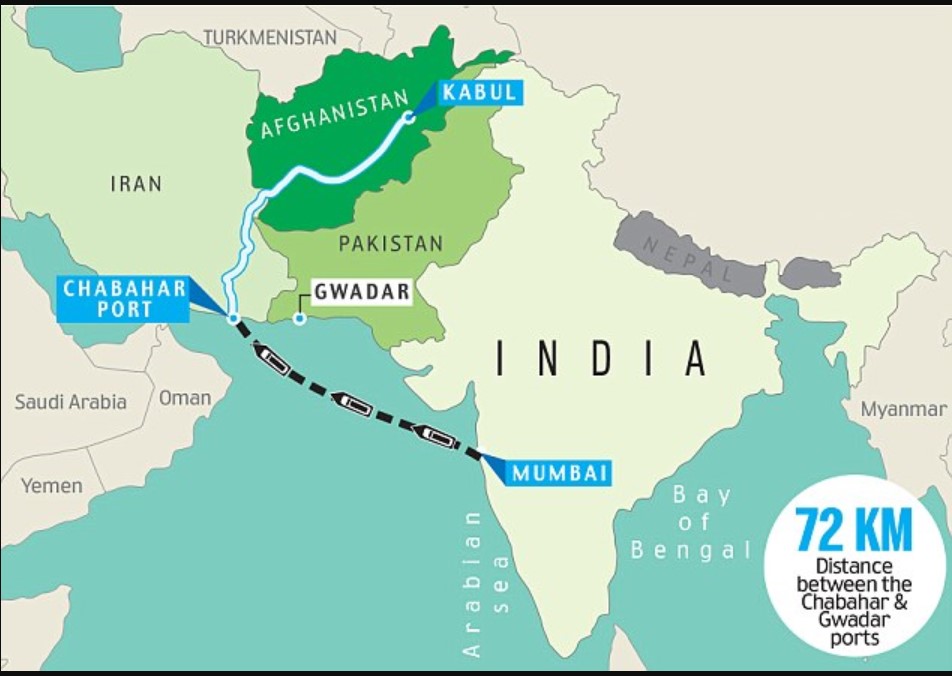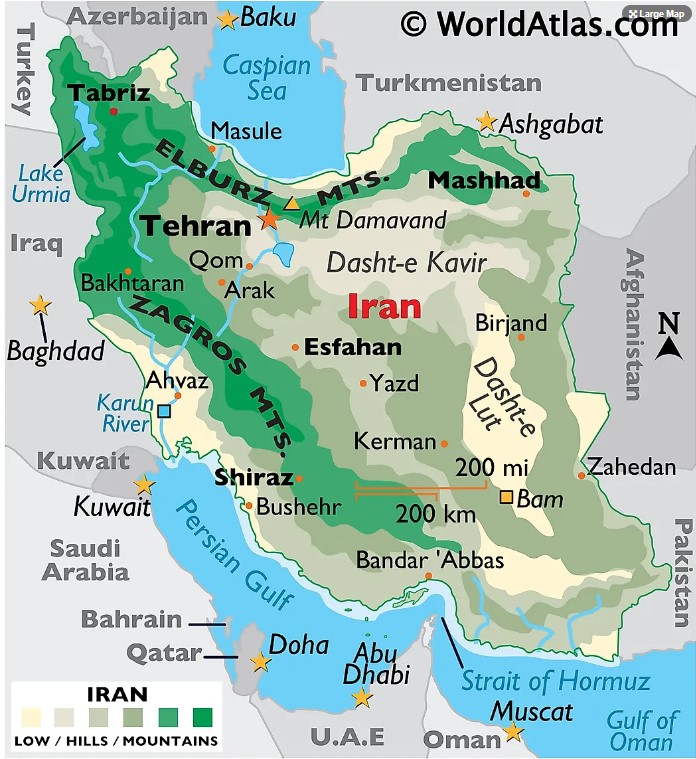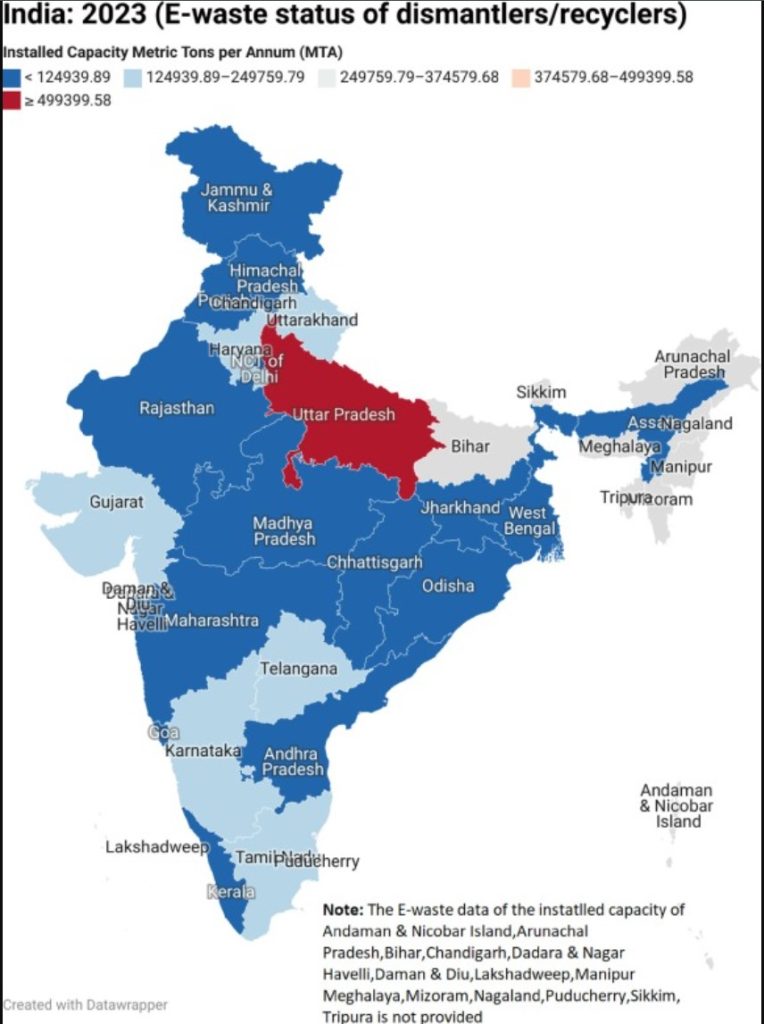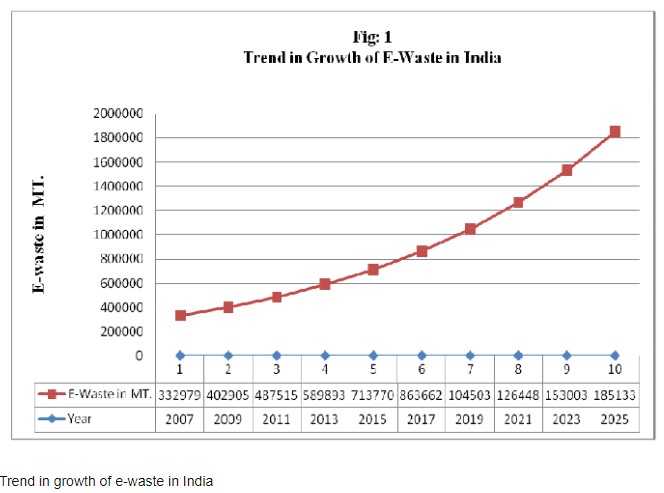CONTENTS
- Chabahar’s Opportunities and Challenges
- Mitigating the e-waste Crisis
Chabahar’s Opportunities and Challenges
Context:
The recently finalized agreement between India and Iran, granting New Delhi the rights to invest in and manage the Shahid-Behesti terminal at Chabahar Port for an additional decade, has garnered significant attention. The agreement comes at a volatile time in West Asia, with ongoing conflict in Gaza, heightened Israel-Iran tensions, and domestic challenges in Tehran following the deaths of Iran’s President and Foreign Minister in a helicopter crash.
Relevance:
GS2-
- Bilateral, Regional and Global Groupings and Agreements involving India and/or affecting India’s interests.
- Effect of Policies and Politics of Developed and Developing Countries on India’s interests, Indian Diaspora.
Mains Question:
Reflecting India’s strategic perspective, the Chabahar project is vital for both economic and strategic reasons. Discuss in the context of the ongoing conflict in West Asia and Iran’s involvement in this regard. (10 Marks, 150 Words).
Significance of the Chahbahar Port:
- Reflecting India’s strategic perspective, the Chabahar project is vital for both economic and strategic reasons.
- For India, Chabahar represents an extension of its neighborhood strategy rather than its West Asia policy.
- The port is a crucial element of the International North-South Transport Corridor, aiming to link India with Central Asia and Russia while bypassing Pakistan.
- Additionally, Chabahar aligns with the new realities in Afghanistan, as the Taliban-led government in Kabul has expressed support for the port, including a $35 million investment to reduce reliance on Pakistani ports like Karachi or the China-backed Gwadar.
- Bilaterally, Chabahar reflects the complexities between India and Iran. Despite the public support for the project, India-Iran relations would be less vibrant without it.
- Various factors influence this, tied to both nations’ national, regional, and geopolitical interests. Instead of expanding economic cooperation beyond Chabahar, many older projects have been abandoned, such as the Farzad-B gas field discovered by India’s ONGC Videsh, and the IranoHind shipping company, dissolved in 2013 due to sanctions.
- Chabahar, a legacy project dating back to 2003, marks an era when India was actively developing economic assets abroad, including Chabahar in Iran and Sakhalin-I in Russia.


Diplomatic Reflections:
- The geopolitics surrounding India’s involvement in Chabahar and Iran’s strategic maneuvers offer a fascinating study.
- This recent deal was signed shortly after Israel and Iran exchanged missile fire, nearly escalating to full-scale conflict.
- Meanwhile, India’s Adani Group invested in Israel’s Haifa port, acquiring it for $1.2 billion. This investment was facilitated by India’s engagement in new diplomatic and economic initiatives with the United States, Israel, and Arab partners, such as the I2U2 and the India-Middle East-Europe Economic Corridor.
- The fact that India’s investment in Haifa did not hinder the Chabahar deal underscores the effectiveness of Indian diplomacy.
- India’s continued development of Chabahar, providing access to regions like Central Asia and Afghanistan, could foster integration and present alternatives to China-backed projects.
- It also indicates U.S. recognition that India’s strategic access benefits Washington. Recent U.S. remarks about potential sanctions on Chabahar are seen as shortsighted.
- Despite China’s financial influence and the 2021 strategic agreement with Iran, Tehran remains independent and not beholden to Beijing.
- India previously suffered by halting oil imports from Iran under Obama’s influence, causing Iran, a longstanding top oil supplier for India, to drop from its top ten.
- Even though India aimed to gain favor with Washington during the nuclear deal negotiations, the Trump administration’s unilateral withdrawal from the Joint Comprehensive Plan of Action (JCPOA) in 2018 reshaped perceptions of U.S. foreign policy stability and non-partisanship.
Conclusion:
The Chahbahar port project should not be the sole focus of the India-Iran bilateral relationship, as this singular concentration of interests is unstable. Also, the U.S. needs to adopt a more flexible stance on sanctions against Chabahar. Viewing the port solely as leverage against Iran’s policies in West Asia fails to appreciate the broader context of India’s regional outreach, which could align with larger American objectives.
Mitigating the e-waste Crisis
Context:
Today, with advancements in science and technology, computers and mobile devices have become essential to our work and personal lives, making it difficult to imagine life without them. However, this widespread usage leads to a growing problem of e-waste, as consumers frequently upgrade their gadgets, resulting in a high turnover of electronic devices.
Relevance:
GS3- Environment- Pollution and Conservation
Mains Question:
What are concerns associated with the rising magnitude of e-waste generation in India? What role can innovations, regulations and corporate responsibility play in this regard? (15 Marks, 250 Words).
About e-waste:
- e-waste, or electronic waste, consists of discarded electronic devices and appliances that are no longer useful or wanted.
- Since 2011, India has implemented laws to manage e-waste, requiring that only authorized dismantlers and recyclers handle it. The E-waste (Management) Rules, 2016, were enacted in 2017.
- India’s first e-waste clinic for segregating, processing, and disposing of waste from household and commercial units was established in Bhopal, Madhya Pradesh.
Concerns Associated with e-waste:
- It is a significant issue due to its complex composition, rapid generation, and the challenges it poses to human health and the environment.
- Toxic substances like lead, mercury, and cadmium in batteries and semiconductors can cause neurological damage and harm the kidneys and bones.
- Additionally, these toxic chemicals can leach into the soil, rendering it infertile and unsafe for agriculture.
- Furthermore, e-waste contamination affects water and air quality. Improper disposal can pollute water bodies, impacting water supplies and aquatic life, while toxic fumes from extracting valuable metals can cause respiratory problems.
- Airborne toxins can travel long distances, deteriorating air quality and harming human health. In many developing countries, informal e-waste recycling provides a significant source of income.
- However, these activities are often unregulated, exposing workers to high levels of toxic substances without adequate protection.
- Exposure to improperly managed e-waste can lead to respiratory problems, skin disorders, and other severe health issues.
- Additionally, improper disposal and recycling contribute to greenhouse gas emissions, exacerbating environmental degradation and increasing carbon footprints.
- According to the Global E-waste Monitor 2020, the world generated 53.6 million metric tons of e-waste in 2019, with projections reaching 74.7 million metric tons by 2030.
- Only a small portion of this waste is properly recycled, with much of it ending up in landfills, posing significant environmental and health risks.
- The ICEA report indicates that e-waste management in India is largely handled by the informal sector, which is responsible for about 90% of e-waste collection and 70% of recycling.
- This sector is highly effective at salvaging older electronic devices for spare parts and conducting profitable repairs.


Way Forward:
- Proper recycling is the key to recovering valuable materials and reducing the need for new resource extraction.
- This can only be achieved through stringent government regulations for e-waste management, including proper collection, recycling, and disposal practices. Initiatives such as e-waste collection drives and recycling centers are essential.
- Manufacturers should also be held accountable for the entire lifecycle of their products through take-back programs and recycling initiatives.
- Investing in advanced recycling technologies can improve the efficiency and safety of extracting valuable materials from e-waste.
- Encouraging manufacturers to design products that are easier to recycle, repair, and upgrade can reduce e-waste generation.
- Educating consumers about the importance of proper e-waste disposal and available recycling options can further reduce improper disposal practices.
- Establishing international standards for e-waste management can ensure safe and efficient recycling practices globally.
- Strengthening international regulations to prevent the illegal export of e-waste to developing countries, where it is often processed unsafely, is also crucial.
- From gadgets to green initiatives, everyone should recycle their e-waste to help create a cleaner, greener future.
Conclusion:
E-waste management poses a significant challenge for governments in many developing countries, including India. It is rapidly becoming a major public health issue. To ensure proper collection and effective treatment, it is crucial to integrate the informal sector with the formal sector. Competent authorities must establish mechanisms to handle and treat e-waste safely and sustainably.




